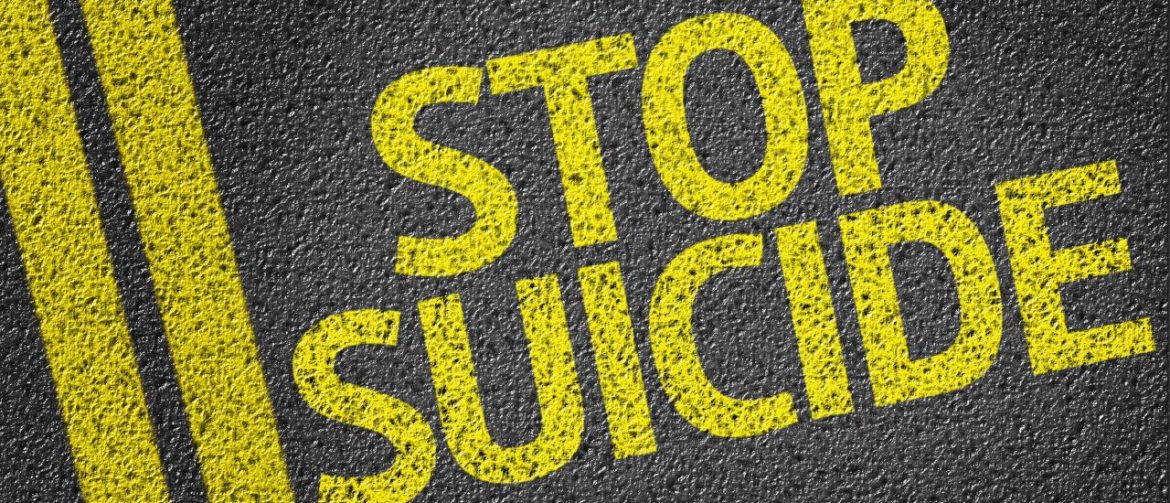The recent deaths of fashion designer Kate Spade and celebrity chef Anthony Bourdain highlight the importance of recognizing the potential warning signs when someone intends to end their life.
Data show that high-profile suicides lead to a rise in copycat deaths.
If there is a teachable moment that can come out of tragedies of the recent celebrity deaths, it is how to educate ourselves about prevention.
We should learn about how to prevent suicide and look and listen to our loved ones for signs of despair, depression and talk of suicide – but sometimes, there are no signs.
Suicide took the life of the only father I have ever known in my life. It will always leave me wondering what I did wrong or what I could have done differently to be there for him, just like he was there for me when I was growing up.
I will always wonder why I didn’t see any signs of suicide. The truth is, I never thought suicide was even considered in the community where I grow up. I never thought that a Christian man who taught me values and how to deal with the streets could ever be suicidal.
Well, I was wrong – and one day we had to go to identify the body of the person we all loved. We had to learn that he was not happy – and none of us recognized the level of sadness and loneliness he was living with each and every day.
On average, one person dies by suicide every six hours in Illinois, according to the Centers for Disease Control and Prevention. More people die by suicide in Illinois annually than by homicide.
The warning signs for suicide include:
- threatening to hurt or kill oneself, or talking about wanting to hurt or kill oneself
- looking for ways to kill oneself by seeking access to firearms, available pills or other means
- talking or writing about death, dying, or suicide when these actions are out of the ordinary for the person
- feeling hopeless
- feeling rage or uncontrolled anger, or seeking revenge
- acting reckless or engaging in risky activities – seemingly without thinking
- feeling trapped – like there’s no way out
- increasing alcohol or drug use
- withdrawing from friends, family and society
- feeling anxious, agitated or unable to sleep, or sleeping all the time
- experiencing dramatic mood changes
- seeing no reason for living or having no sense of purpose in life
Seek help as soon as possible by contacting a mental health professional or by calling the National Suicide Prevention Lifeline at 1-800-273-TALK if you or someone you know exhibits any of these signs.
If you are in crisis, please call the National Suicide Prevention Lifeline at (800) 273-8255 (TALK), or contact the Crisis Text Line by texting TALK to 741741.
The state of Illinois has a number of prevention programs and initiatives, including:
- The Suicide Prevention, Education and Treatment Act (§ 410 ILCS 53/) created the Illinois Suicide Prevention Alliance, which serves as an advisory board to the Illinois Department of Public Health. It strives to bring together public and private organizations as well as stakeholders concerned with mental health to implement the state’s Suicide Prevention Strategic Plan.
- The 2007 Illinois Suicide Prevention Strategic Plan features 10 goals for reducing suicide using a public health approach, and challenges communities, public health professionals and healthcare providers to educate, inform and motivate the public to maximize resources to reduce the burden of suicide in the state.
- Illinois law (§ 105 ILCS 5/34-18.7) requires school guidance counselors, teachers, social workers and other personnel who work with grades 7-12 be trained to identify the warning signs of suicidal behavior in adolescents and teens, and be taught intervention techniques.
- Illinois law (§ 105 ILCS 110/3) encourages comprehensive health education programs in all elementary and secondary schools to include suicide prevention.
- Illinois law (§ 410 ILCS 53/30) encourages the director of Public Health to ensure that pilot suicide prevention programs include health provider and physician training as well as consultation about high-risk cases.
